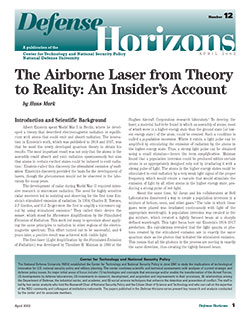Introduction and Scientific Background
 Albert Einstein spent World War I in Berlin, where he developed
a theory that described electromagnetic radiation in equilibrium
with atoms that could emit and absorb radiation. The innovation
in Einstein’s work, which was published in 1916 and 1917, was
that he used the newly developed quantum theory to obtain his
results. The most important result was not only that the atoms in the
assembly could absorb and emit radiation spontaneously but also
that atoms in certain excited states could be induced to emit radiation.1
Einstein called this discovery the stimulated emission of radiation.
Einstein’s discovery provided the basis for the development of
lasers, though the phenomenon would not be observed in the laboratory
for many years.
Albert Einstein spent World War I in Berlin, where he developed
a theory that described electromagnetic radiation in equilibrium
with atoms that could emit and absorb radiation. The innovation
in Einstein’s work, which was published in 1916 and 1917, was
that he used the newly developed quantum theory to obtain his
results. The most important result was not only that the atoms in the
assembly could absorb and emit radiation spontaneously but also
that atoms in certain excited states could be induced to emit radiation.1
Einstein called this discovery the stimulated emission of radiation.
Einstein’s discovery provided the basis for the development of
lasers, though the phenomenon would not be observed in the laboratory
for many years.
The development of radar during World War II required intensive
research in microwave radiation. The need for highly sensitive
radar receivers led to isolating and observing for the first time Einstein’s
stimulated emission of radiation. In 1954, Charles H. Townes,
J.P. Gordon, and H.J. Zeiger were the first to amplify a microwave signal
by using stimulated emission.2 They called their device the
maser, which stood for Microwave Amplification by the Stimulated
Emission of Radiation. This work led many to speculate about applying
the same principles to radiation in other regions of the electromagnetic
spectrum. This effort turned out to be successful, and 6
years later, a positive result was achieved with visible light.
READ MORE >>